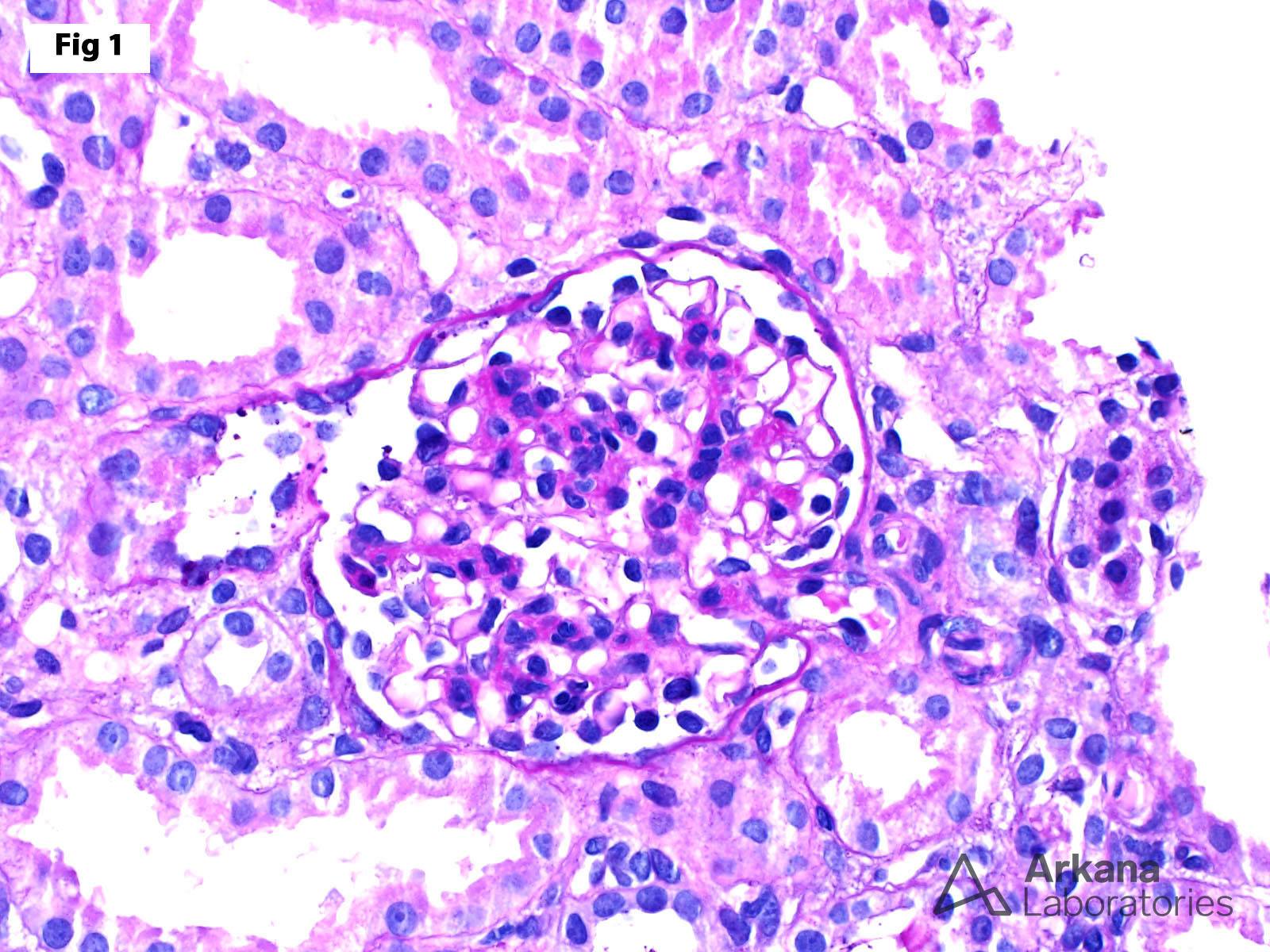This biopsy is from a previously healthy 3 year old female, who presented with sudden onset nephrotic syndrome, hypertension and microscopic hematuria. Light microscopy shows greater than 4 cells per mesangial region in most glomeruli (Fig 1), with absence of segmental glomerulosclerosis. Immunofluorescence is completely negative and electron microscopy shows diffuse epithelial foot process effacement (Fig 2). The findings are consistent with minimal change disease with diffuse mesangial hypercellularity (DMH). This pattern of injury is considered a variant of minimal change disease. Patients with DMH have a higher risk of initial resistance to steroid therapy; however, it is not clear if there is any difference in long-term prognosis. Additionally, compared to minimal change disease, patients with diffuse mesangial hypercellularity have higher risk of developing hypertension and hematuria during the course of the disease.

References:
Southwest Pediatric Nephrology Study Group. Childhood Nephrotic Syndrome Associated with Diffuse Mesangial Hypercellularity. A Report of the Southwest Pediatric Nephrology Study Group. Kidney Int. 1983; 24: 87-94
International Study of Kidney Disease in Children. Primary Nephrotic Syndrome in Children: Clinical Significance of Histopathologic Variants of Minimal Change Disease and of Diffuse Mesangial Hypercellularity. A Report of the International Study of Kidney Disease in Children. Kidney Int. 1981; 20:765
Quick note: This post is to be used for informational purposes only and does not constitute medical or health advice. Each person should consult their own doctor with respect to matters referenced. Arkana Laboratories assumes no liability for actions taken in reliance upon the information contained herein.



